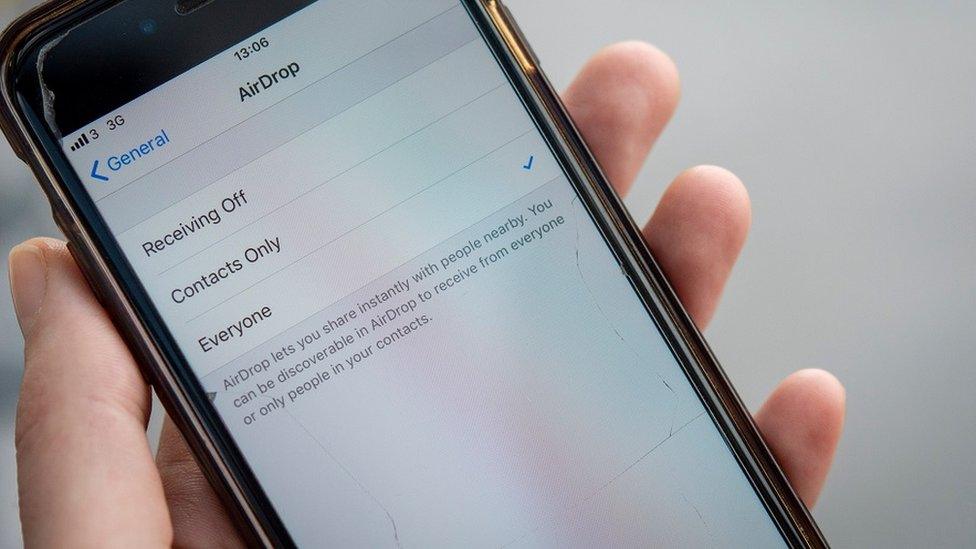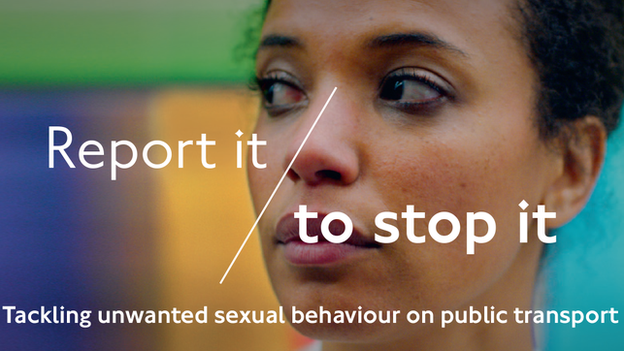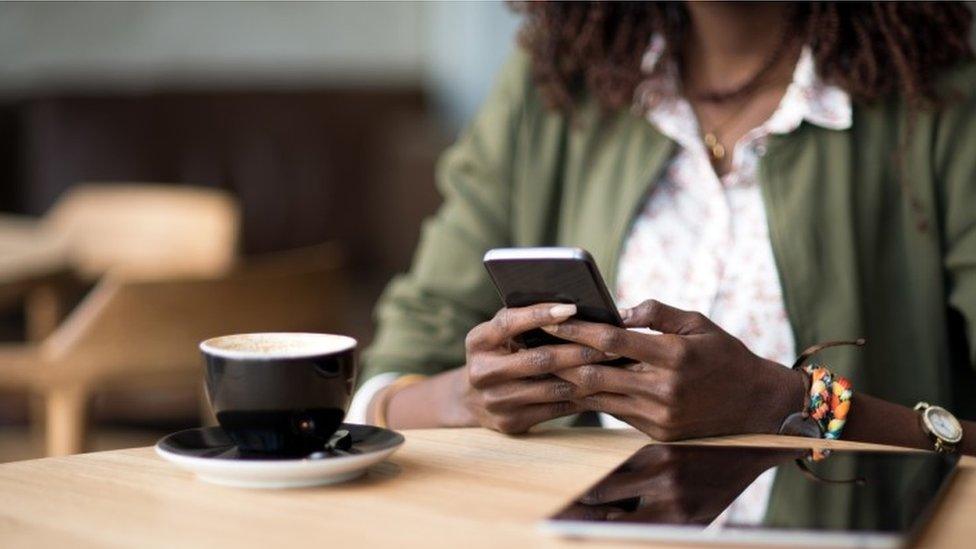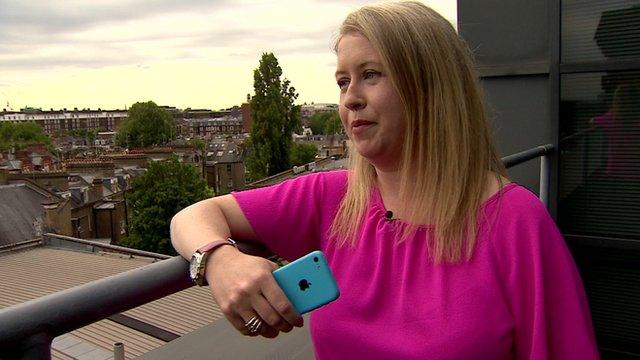Cyber-flashing: 'I froze when penis picture dropped on to my phone'
- Published

Looking at my phone on the journey to work, a picture of a naked man pops up on the screen, and a heatwave of embarrassment warms my body, as if I were the one naked and exposed.
My iPhone was asking me whether to accept or decline a nude picture from a stranger via AirDrop. He had used a filter, sharpened his slim body, blurred the background and was posing in front of a mirror with an erect penis. That's a lot of effort to put into a picture intended for a stranger.
My response was immediate: decline. But I couldn't reject the insecurity and fear it left me with.
As a woman who is empowered by the growing feminist strength movements, I always thought I could handle any man or any insult I'd receive. I didn't want to let this go, so I scouted the Tube carriage to find the man who resembled the naked perpetrator.
From Baker Street to Oxford Circus on the Bakerloo Line, I inspected each face until I received the picture again once we got out of the carriage.
I kept on walking behind him, unsure of what to do. Is it him? Is it not? He had the same long, slim legs, the same face and skinny arms, but what would I say to him? I stood behind him on the escalator and saw that, on his screen, he had the photos open and the AirDrop box below it.
But when he looked into my eyes, the anger and the words to express the insults in my mind vanished. I couldn't say anything. I couldn't ask him why or blame him. I was too scared to do so, and I convinced myself that he understood it from my angry gaze.
The truth is, no matter how strong I thought I was, he turned me, with a picture, into a weak person, feeling humiliated and with no ability to stand up to myself. That sense lasted the whole day, and the incident still repeats in my mind.

I looked into AirDropping nude pictures on the Tube and found that it has a name - cyber-flashing.
I also discovered that it's a broader issue facing many people, as AirDrop lets you send files to and from nearby Apple devices.

How does AirDrop work?
By BBC News technology reporter Zoe Kleinman
Apple launched its file-share service AirDrop in 2011 to enable people to share data wirelessly between Apple devices quickly.
It can be used to share photos, videos, contacts and other documents, but it only works between Apple products.
It works using a combination of Bluetooth and Wifi - both have to be activated for a device to send or receive anything via AirDrop, and the personal hotspot option must be switched off.
If it's an iPad or iPhone it will need to be running iOS7 (released in 2013) or later for Airdrop to work.
Under the general settings menu, Apple users can select to limit AirDrop to only accept files from contacts already stored in their device, or they can select to have it switched off as a default.
There is a similar service for Android devices called Android Beam which works using NFC (near field communication) - NFC is best known for being used in contactless payments. Turning off NFC disables Android Beam.

Other women have spoken about the problem of cyber-flashing.
Emma Wilson said she reported an incident to British Transport Police (BTP) but months after it happened, on the Hammersmith and City line, she is still "angry" at the male officer who she says told her it was impossible to investigate - that there are many incidents and not enough information, and suggested to her it was "just photos".
His advice was to make sure she turned off her AirDrop in all public places in future.
The tool means files can be shared instantly and easily between phones without a number being revealed.
Ms Crighton-Smith explains how she was cyber-flashed
Apple itself advises people to guard against unsolicited messages by turning AirDrop off or setting it to receive files from contacts only.
BTP Detective Inspector Ashley Cooper said on average the force receives about two to three reports each month from people who have been cyber-flashed.
He reiterated the advice for people to review their privacy settings.
But Rachel Krys, co-director of End Violence Against Women Coalition, said the onus should not be on women.
Police should "stop telling women to do something and expecting them to change their behaviour because men might invade their privacy", she said.
Emma also feels that the point is not to turn off a useful feature but for men to stop sending these kinds of pictures.
"I'm mad that we live in a system where tech is something women need to be careful with and wary of, should we tempt men to use it to harass us," she said.
The government is working to take action in England and Wales to protect people from receiving unwanted images of male genitals on their smartphones.
A new law proposed by the House of Commons' Women and Equalities Committee has a "strong focus on prevention so it's not about telling women to change their behaviour, but about changing the behaviour of the men who choose to be abusive in this way."
And it has called for a whole programme of work aimed at both boys and men to prevent sexual harassment in all its forms.

British Transport Police are running a campaign to encourage people to report unwanted sexual behaviour
There are several petitions online to make cyber-flashing a crime.
But some, including Ms Krys, believe making it a crime is not the solution and that there must be safeguards built into the system so that when companies develop technology software, they think about women and how this could affect them.
For now, BTP says the best way to tackle cyber-flashing is to report it, as soon as possible after the event.
"Cases of cyber-flashing go largely unreported either because victims don't feel the incident is serious enough to report or simply because they don't know where to turn," Det Insp Cooper said.
He said each offence reported helped to bring police closer to identifying an offender, which may ultimately lead to their arrest and prosecution.To contact BTP text 61016 or call 0800 40 50 40.
- Published6 March 2019

- Published15 June 2016

- Published13 August 2015
